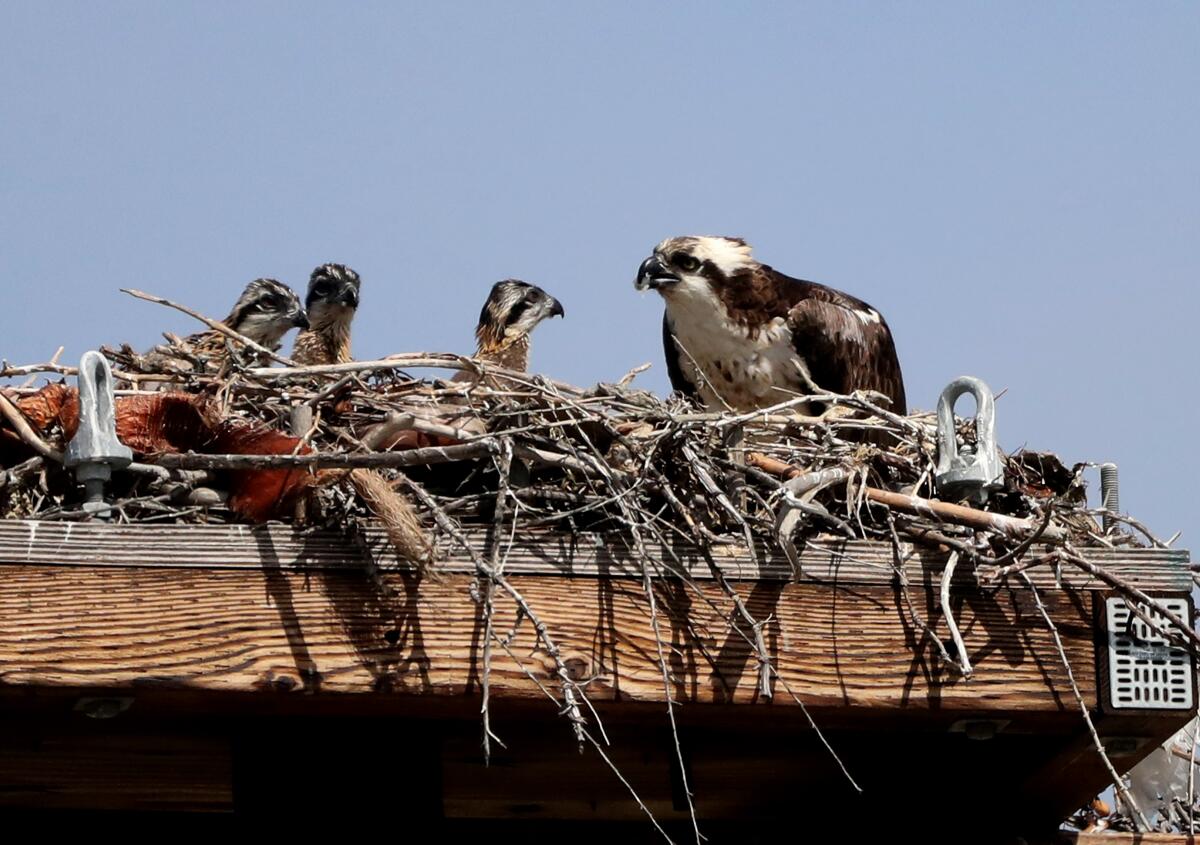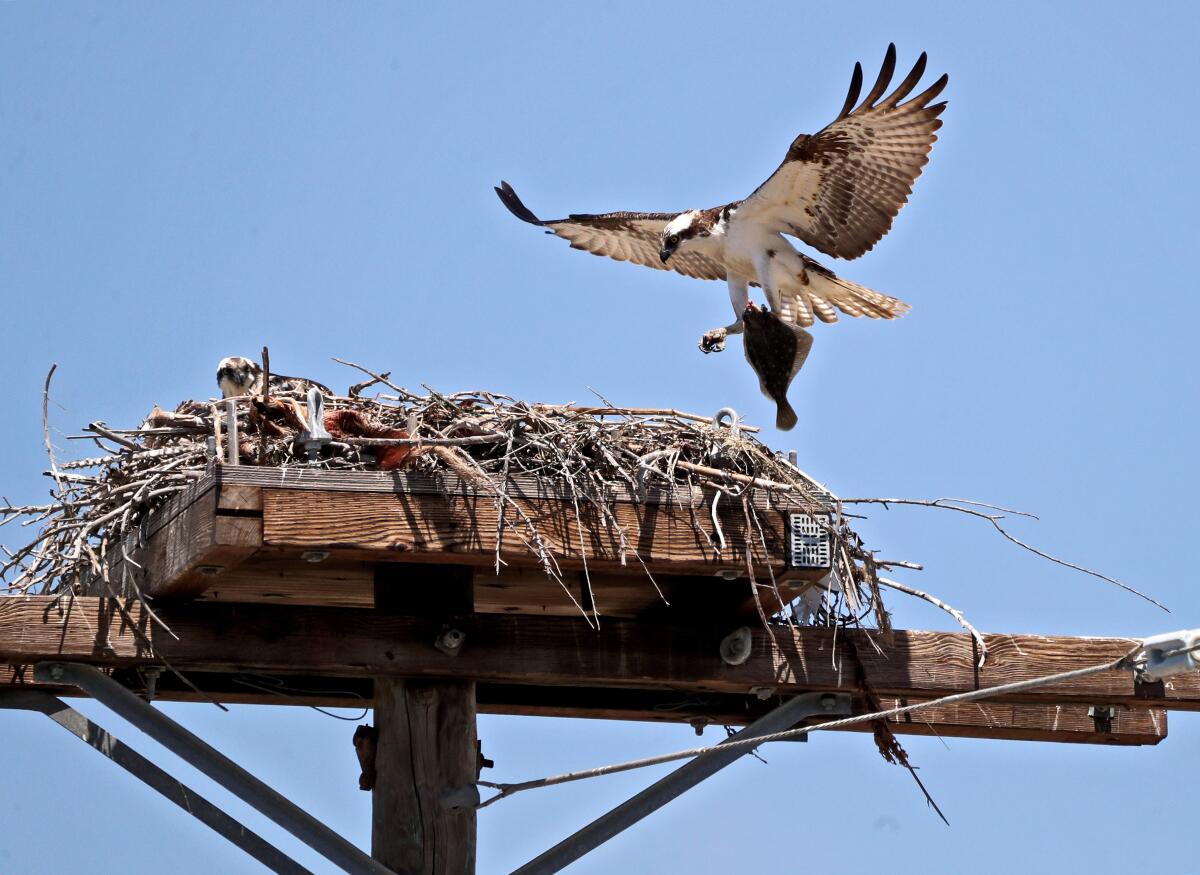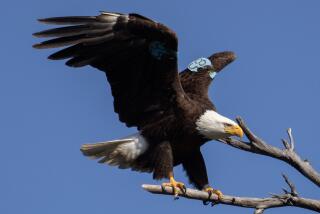After years without chicks, Huntington Beach osprey pair now have a brood to feed

- Share via
For the last four years, a pair of ospreys have nested at the Sunset Aquatic Marina in Huntington Beach without success in raising chicks, according to residents and wildlife photographers. But this year things are looking up for the avian couple.
The pair have been keeping other ospreys and hawks away from their nest for good reason: It was recently discovered that they have three chicks in the nest they built on a wooden platform at the top of a terminal utility pole.
Photographer John LeeWong of La Cañada Flintridge said that he’s been documenting this pair for 2½ years and that he’s never seen chicks at the nest until this spring.
“I’ve heard from locals that they lay eggs every year, but they never hatch” until now, said LeeWong, adding that he has been told by other photographers this is the first time in at least four years that the ospreys have had a successful brood.
For the last four months or so, photographers such as LeeWong have captured the male osprey bringing meals of freshly caught spotted bay bass, halibut and other ocean delicacies to his mate.

The female, in turn, leaves the nest only to eat what her mate brings her. She takes her part of the fish to a nearby utility or light post and eats while the male remains in the nest watching over their offspring.
Huntington Beach resident Carole Stelle said she thinks it’s wonderful that the osprey pair now have a family. She said she walks the area two or three times a week and finds it “intriguing and amazing to watch these birds that look almost like an eagle.”
Susie Nunez said that she brings her children to watch the ospreys and that they enjoy it “especially when the bird has a big fish.”
Nunez brings binoculars to get a closer look. “We are very lucky to have [the ospreys] very close to us,” she said.
The brood will fledge about eight weeks after hatching and could stay with their parents for up to two months after that, according to the U.S. Fish and Wildlife Service website.
Roa writes for Times Community News.
More to Read
Sign up for Essential California
The most important California stories and recommendations in your inbox every morning.
You may occasionally receive promotional content from the Los Angeles Times.













